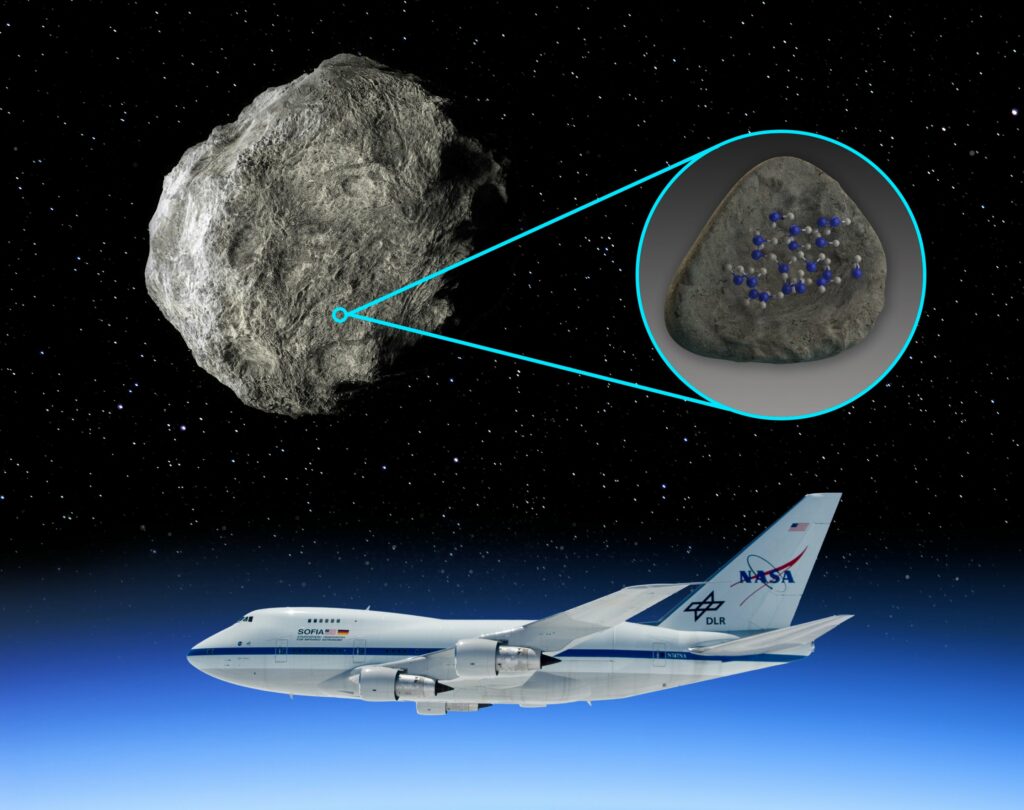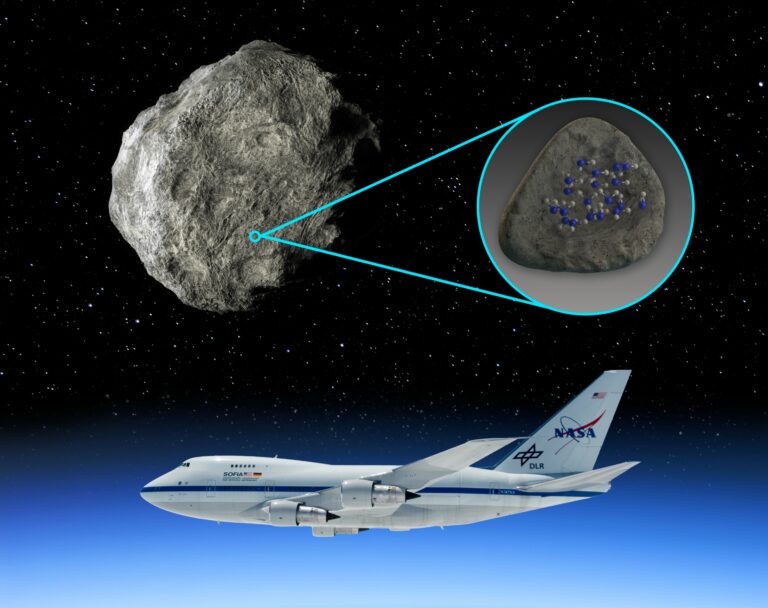Water molecules have been detected on asteroids by scientists for the very first time.
The retired Stratospheric Observatory for Infrared Astronomy (SOFIA), a collaborative effort between NASA and the German Space Agency at DLR, has yielded valuable data. Southwest Research Institute scientists utilized this data to make a groundbreaking discovery – the presence of water molecules on an asteroid’s surface. By employing the FORCAST instrument, they examined four silicate-rich asteroids and successfully identified mid-infrared spectral signatures indicating the existence of molecular water on two of them.

Dr. Anicia Arredondo, the lead author of a paper published in The Planetary Science Journal, emphasized the significance of asteroids as remnants from the process of planetary formation. Their compositions vary depending on their location within the solar nebula. The distribution of water on asteroids is particularly intriguing as it can provide insights into how water was delivered to Earth.
Silicate asteroids, which lack water, form in proximity to the sun, while icy materials come together farther away. Understanding the locations and compositions of asteroids allows us to comprehend the distribution and evolution of materials within the solar nebula since its formation. Furthermore, studying the distribution of water in our solar system not only offers insights into other solar systems but also guides our search for potential life, as water is essential for all life forms on Earth.
Arredondo stated that the presence of molecular water on the asteroids Iris and Massalia has been unequivocally identified. This discovery was inspired by the successful detection of molecular water on the sunlit surface of the moon by another research team. The researchers believed that the same spectral signature could be found on other celestial bodies using SOFIA.
In the moon’s southern hemisphere, SOFIA detected water molecules within one of the largest craters. Previous observations had identified hydrogen on both the moon and asteroids, but it was difficult to differentiate between water and its chemical relative, hydroxyl. The scientists found approximately the equivalent of a 12-ounce bottle of water per cubic meter of soil across the lunar surface, where it was chemically bound in minerals.
Arredondo explained that the abundance of water on the asteroid, as determined by the strength of the spectral features, is similar to that found on the sunlit moon. On asteroids, water can also be bound to minerals, adsorbed to silicate, or trapped or dissolved in silicate impact glass.
The data collected from the asteroids Parthenope and Melpomene were inconclusive due to excessive noise. It appears that the FORCAST instrument lacks the necessary sensitivity to detect the water spectral feature, if present. However, the team plans to utilize NASA’s James Webb Space Telescope, renowned for its precise optics and superior signal-to-noise ratio, to investigate more targets.
Arredondo revealed that initial measurements have already been conducted for two other asteroids using the Webb telescope during cycle two. Additionally, they have submitted another proposal for the next cycle to study an additional 30 targets. These studies will enhance our understanding of the distribution of water in the solar system.
Do not forget to share your opinion with us to provide you with the best posts !





0 Comments